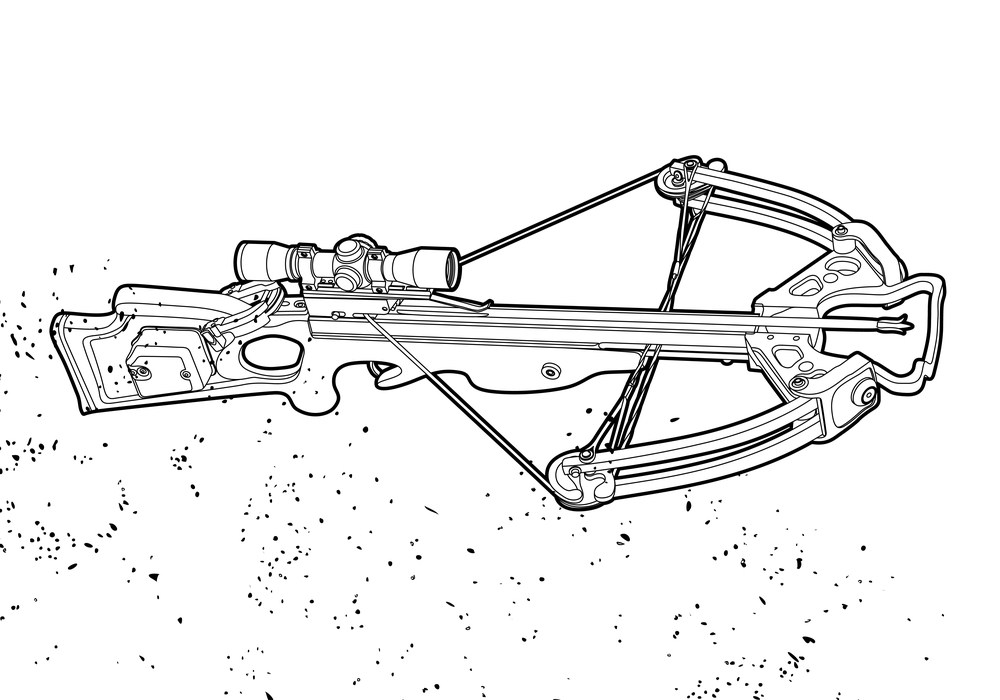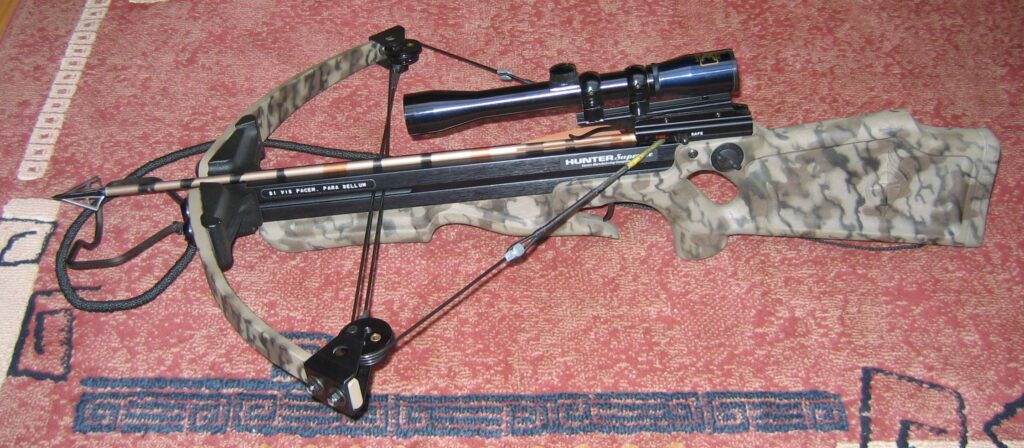
How to Shoot a Crossbow More Accurately
Y’all know that I’m passionate about hunting, and the reason I created this site was to share my passion with the web. The hunting community is filled with hunters from all sorts of backgrounds, and there’s often some differing opinions on the “best” way to enjoy the sport. Whether it’s hunting location or what sort of weapon is the best tool for the job, you’re guaranteed to hear a wide variety of conflicting opinions. One thing we can all agree on, however, is how important is is to be able to use your weapon correctly. Whether you hunt with a crossbow, compound bow, or rifle, being able to land an accurate shot is super important. In this article I’m gonna give y’all a detailed look at how to shoot your crossbow more accurately. Let’s get into it!
The Right Bow

The first thing I’m gonna discuss in this crossbow accuracy guide is the most simple and the most important. A lot of accuracy issues are solved by having a bow that doesn’t fit the user correctly, and you may see a big jump in your accuracy if you make sure your crossbow fits perfectly for you. There are tons of crossbows available, with plenty of accompanying reviews online. You may find that the “best” crossbow is actually not the best for you.
There’s really no substitute for getting a bow in your hands and firing a few shots. You’ve gotta make sure you can cock the bow comfortably and hold it comfortably if you’re gonna have any hope of accuracy in the field. The internet offers us a large amount of information, but I really think you’ve gotta try before you buy. Maybe I’m old school, but I’m just trying to give y’all some honest advice.
It may be a tough bite to swallow, but it’s possible you’re gonna have to start from scratch and buy a better bow if the rest of the tips in this guide don’t address your issue. The fit of a crossbow is very much a personal thing, and being in tune with your weapon is absolutely necessary if you’re gonna land that perfect shot.
Maintain Your Bow
A quality crossbow is often a serious financial investment. Just like any big money sink, you’re gonna want to make sure you’re trying darndest to keep your bow in the best shape possible for a long, long time.

The process for maintaining your specific crossbow will likely be included in the owner’s manual, but some general processes that are pretty standard are lubricating the flight rail and waxing the string. The flight rail and string are pretty much the most important parts of your crossbow, so taking that extra time to keep them in tip top shape will make a big difference when you’re lining up your shots.
The biggest attention to detail won’t make a lot of difference if your bow is falling apart, so make sure you take care of your bow after each hunting trip to keep it kicking for years to come.
The Right Arrows
One of the most important things you’re gonna want to pay attention to is the quality and design of your crossbow arrows. Even an amazingly tuned crossbow is going to be wildly inaccurate if your arrows aren’t worth a damn! Below we’ve listed a couple of tips for choosing the perfect arrow. Later on in this crossbow accuracy guide, we’ll get into the nitty gritty on how exactly to line up a good shot, – but make sure you don’t neglect this section!
- Fletching. You’re gonna want to look for a crossbow bolt with at least 5 inches of fletching. You see, arrows for crossbows are often a lot shorter. Getting a fletching of the proper length can make a big difference when it comes to evening out the flight of your bolt.
- Check Your Arrows. Crossbow bolts are often made of aluminum, and it’s a great material but it sure does bend easily! Even really minor bends that might be difficult to spot with the naked eyes can make a big difference in the straightness of your shot. Always make sure you’re using arrows that are perfectly straight, and maintain or replace any bent arrows to ensure you’re always gonna land that perfect shot.
- Try Carbon Fiber. While Aluminum is definitely a common material for bolts, you’re generally gonna do a lot better with a carbon fiber arrow. It bends a lot less easily and you can often completely bypass the concerns I just talked about above by just choosing the right materials.
- Check the Groove. The groove in the flight track of your arrow can give you a lot of useful information on whether or not your arrows are set up correctly. If you notice heavy groove marks at the front of your arrow shaft, your point may be too heavy. If there are heavy marks at the back of the arrow, it’s likely that the point is too light. If you have heavy groove marks both places, your arrow is likely just too darn light for the crossbow – time to buy new bolts! A general rule of thumb is to look for a lightly grooved arrow from front to rear.

To largely avoid a lot of these issues, just go with the arrows that are recommended by the manufacturer. The people that built the bow will have the best idea of what kind of ammunition you need for an accurate shot. Makes a whole lot of sense, in my humble opinion!
Properly Calibrated Scope
This section is gonna be short and sweet. If you have a scope on your crossbow, you’re gonna want to make sure it’s calibrated correctly.
Basically, you’re looking to “zero” your scope. This simply means that the top part of your reticle should be adjusted so that you’re going to accurately hit a target at a 20 yard range. If you can get the calibration for 20 yards lined up correctly, you’ll be able to shoot even greater distances with accuracy too. Lining up the 20 yard lines up further distances – pretty simple, right?
Most scopes generally have a couple of different dials: the windage adjustment knob, and the elevation adjustment knob.
The windage adjustment knob allows you to adjust the flight of the arrow to the right or left. Obviously, y’all are gonna want to adjust this to make sure your 20 yard distance is smack dab in the center. The elevation adjustment knob, as the name suggests, allows you to adjust the vertical flight of your arrow.
The best way to figure out how to calibrate your scope is to set up a target and fire some bolts! Fire a total of three bolts while aiming at the bullseye through your scope. If the bolts end up off center, spin the dials to make adjustments and give it another go! This might take a while, but it’s worth the time and effort to make sure you’re gonna land a kill when it counts most.
Make Sure Your Crossbow Is Cocked Correctly
Now that you’ve figured out how to get your hands on the right arrows and adjust your scope, you’re ready to get into the mechanics of how to shoot your crossbow more accurately. You could do everything else correctly, but if your bolt is cocked off center none of it will matter.
You’re gonna want to look at the string, and make sure that’s cocked perfectly straight. A crossbow bolt cocked even just a fraction of an inch to the left or right can have a big negative impact when it comes to getting your arrow to go where you want it to!
There’s an easy way to make sure you cock correctly every time, and all you need is your crossbow and a marker!
Put a mark on your crossbow where it passes over the flight rail (uncocked), and just make sure that mark is lined up with the trigger mechanism centered.
Another great way to make sure you’re cocking easily and correctly is to use something like a rope cocking device. Learn more about these nifty little products here.
Address Crossbow Canting
Crossbow canting basically means angling your bow to the right or left so that one limb of the bow is lower than the other. Having a bow that’s not perfectly level can make your bolts shoot in some wild directions. I just want to stress to y’all in this section the importance of making sure you shoot with level bow to land that perfect shot.
Canting to the left will make your shot veer left, and shooting to the right will make it veer right. Fortunately, avoiding this issue is super simple.
The best way to make sure you’re not canting to the left or right is to install a simple level on your bow. Just line the level up and you’re certain to make a much straighter shot.
Canting is an issue that’s easily addressed but can really throw off an otherwise perfect shot. Spend the few bucks on a crossbow level to make sure you’re set up for success! Trust me, it makes a big difference.
Practice Makes Perfect
I’ve done my best to give y’all a sense of some fixes and preventative measures to make sure you’re firing at peak accuracy, but there’s little substitute for getting some good shots in. Following the tips I’ve listed will point you in the right direction, but shooting a crossbow does take some skill and the only way to get that skill is to try. Whether it’s a target or a deer, firing your crossbow and taking the time to line up accurate shots will go a long way to making sure your arrows fly true. I sincerely hope this article on how to shoot your crossbow more accurately has helped y’all out. Like any hobby, hunting takes time and commitment to perfect. Now get out there and put in that time!
